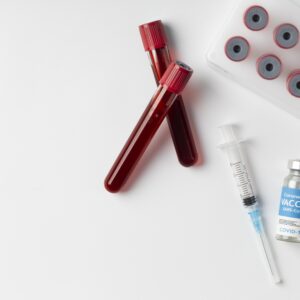A Blood Culture Test is a laboratory test used to detect the presence of bacteria, fungi, or other microorganisms in the bloodstream. It is crucial for diagnosing serious infections such as septicemia (blood infection), endocarditis (heart infection), or deep-seated infections that have spread into the blood.
Why is the Blood Culture Test Done?
Doctors recommend this test to:
- Diagnose bloodstream infections (sepsis).
- Identify the type of bacteria or fungi causing the infection.
- Determine the most effective antibiotic or antifungal treatment (antibiotic sensitivity testing).
- Monitor treatment effectiveness in ongoing infections.
Test Procedure and Preparation
-
Blood Sample Collection
- Blood is drawn from a vein (usually in the arm).
- Typically, two or more samples are taken from different sites to improve accuracy.
- The sample is placed in special culture bottles that promote the growth of microorganisms.
-
Incubation & Analysis
- The samples are kept in a controlled environment to allow bacterial or fungal growth.
- If microbes are present, further testing identifies the specific organism and its resistance to antibiotics.
-
 Blood Culture Test
Blood Culture Test Blood Culture Test
Blood Culture Test